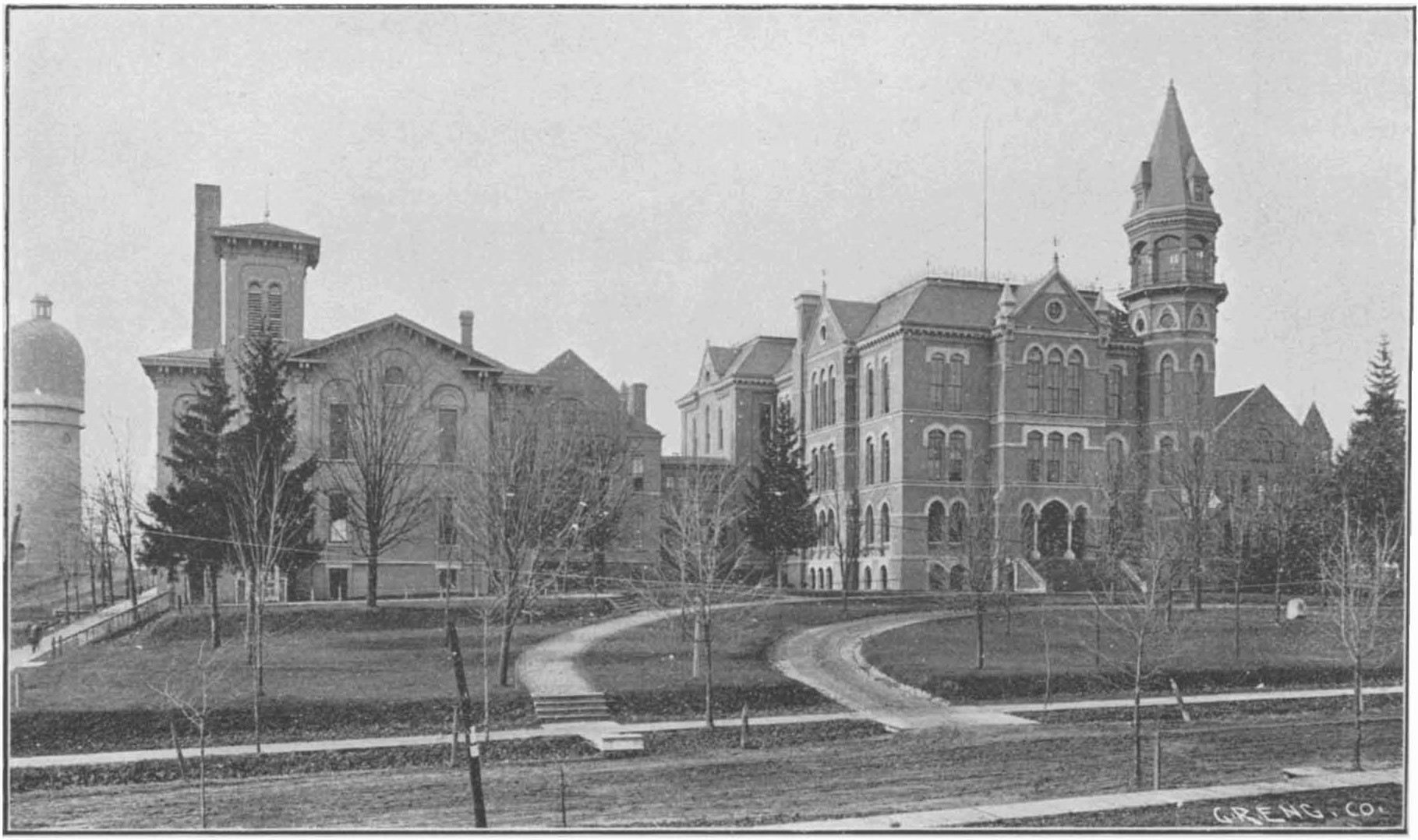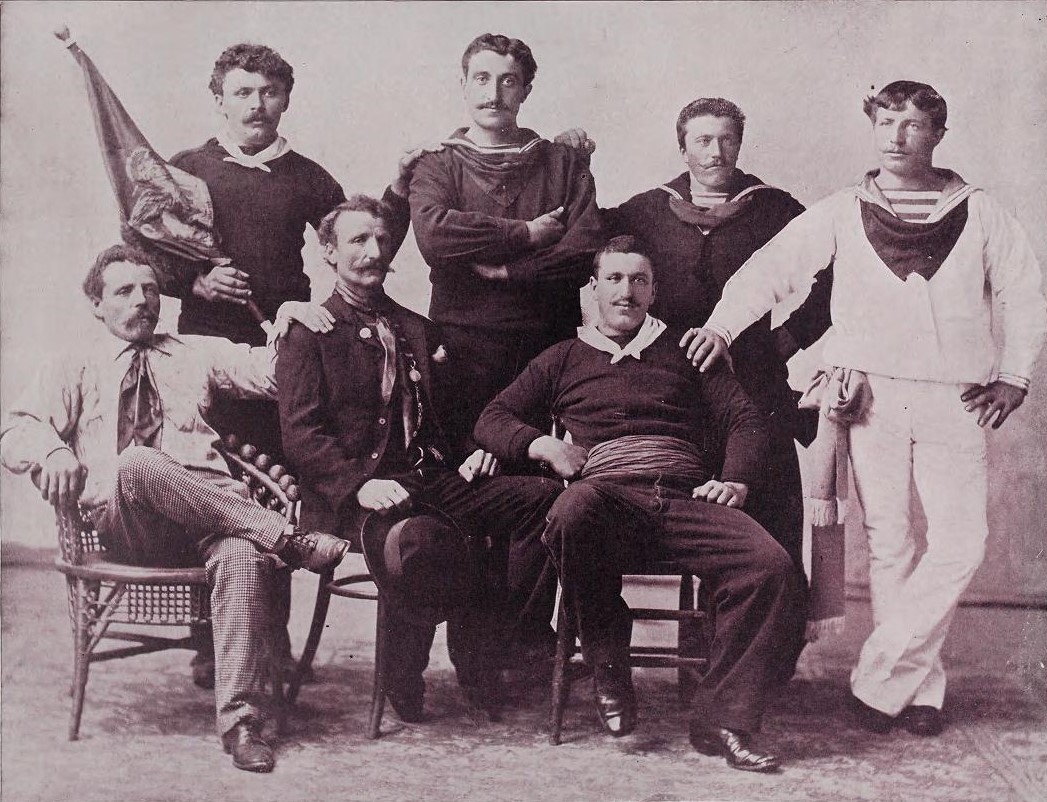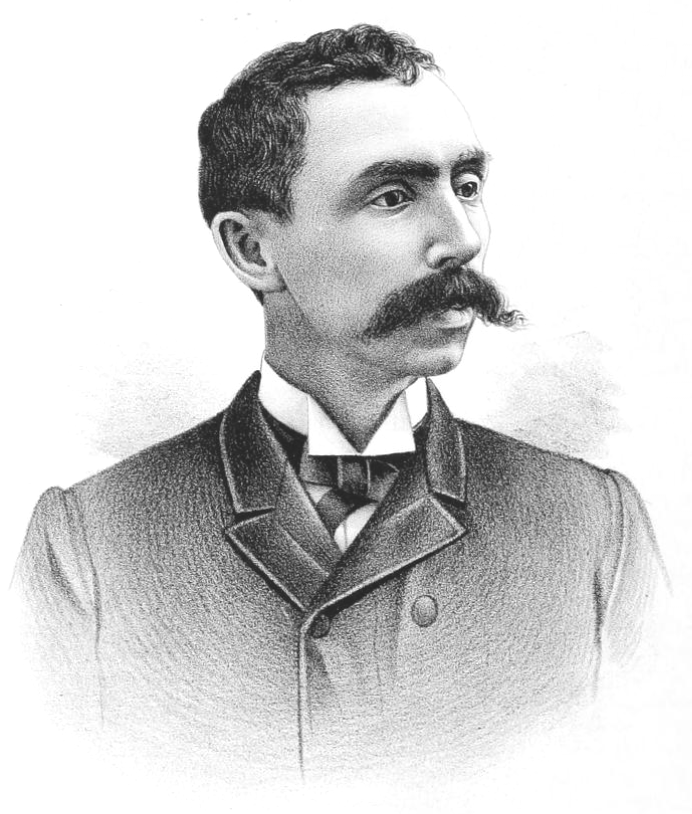The Michigan State Normal School Exhibit
The 1893-94 Michigan State Normal School catalog gave this description of the Normal’s contribution to the Fair:
The Columbian Exposition
The school made a small but effective display at the World's Columbian Exhibition at Chicago. Upon a screen were displayed about fifty large photographs illustrating actual work in the laboratories, in the library, in the observatory, and in the class-rooms of the various departments; and the assemblage of students and choir in the chapel. Views of the grounds and the exterior of the buildings were also shown, together with architects' floor-plans and exterior elevations. Upon other screens were charts showing, graphically, the growth of the school in membership from its foundation, the growth of the library during the past decade, the ratio of teachers to graduates for each year of the same period, and other statistics of general interest and value. There were also published and gratuitously distributed, five thousand copies of a pamphlet of 136 pages prepared by the heads of the departments, setting forth the plan and purpose of the school, together with an outline of the work. The plans, charts, and photographs have been preserved and are deposited in the general library for future reference.
A Catalogue of the Public School Exhibit of the State of Michigan, compiled and arranged by Ferris S. Fitch, Superintendent of the Exhibit and 1873 MSNS graduate, lists the components of the Normal School exhibit:
945, 946 Elevation of Main Building.
947-950 Floor Plans.
951 Chart of Statistics of Library.
952 Chart Showing Number of Undergraduates who have Taught.
953 Chart Showing Proportion of Graduates who have Taught.
954 Chart Showing Attendance and Number of Graduates.
955 Photographs of Buildings, Rooms, Pupils, Etc.
Of these items, we have been able to locate and include in our virtual exhibit the following:
Elevation of the Main Building: The University Archives has a north elevation drawing of Old Main drawn by Ypsilanti architect E.P. Rorison with the “Michigan Public Schools 946” label still attached. The Archives has a similar south elevation by Rorison, which we believe was item 945. Unfortunately, we have not been able to identify the four floor plans.
Statistical Charts: Unfortunately we have not been able to locate the four charts displayed in Chicago. However, in his 1893 report to the State Board of Education, Principal Sill reproduces the chart showing attendance and number of graduates from 1854 to 1893 “prepared for the Columbian Exposition with laborious care by Professor Austin George.”
Photographs: The photographs have been preserved in the EMU Archives.
In addition, three items pertaining to the Normal School were included in other parts of the Public School exhibit:
Statistical Chart … 637
Catalogue … 693
Photo. of Main Building … 705
Item 693 was a bound volume entitled Catalogues of the State Educational Institutions of Michigan. It today belongs to the University of Michigan Libraries, and the Normal School catalogue it includes is the 1891-2 edition. The “Michigan Public Schools 693” label is intact on the volume’s cover.

Finally, the “pamphlet of 136 pages” distributed at the Fair was The State Normal School of Michigan: Its Plan and Purpose and an Outline of Its Work. This photo of the Conservatory and Old Main, which was included in the pamphlet, may have also been the “Photo. of Main Building” displayed as item 705:

The Gibsons’ Photographs
John Jefferson Gibson, an enterprising immigrant from London, Ontario, opened photography studios in Ann Arbor in 1883 and in Ypsilanti in 1884. In 1886 photographer May M. Clark, an 1882 graduate of the Normal School, joined his studio, and in 1889 they married and became business partners. The Gibsons’ clients included the University of Michigan, and in 1893 John took a remarkable set of photos for the University of Michigan’s Columbian Exposition exhibit.
We now know that J. J. Gibson also took the equally remarkable photos for the Normal School’s Columbian exhibit. The Normal News reported on December 11 and 23, 1892, and on February 24 and March 10, 1893 that Gibson had been on campus taking photos. The product of Gibson’s efforts was the first extensive photographic record of the Michigan State Normal School.
As it turned out, these assignments were just the beginning of the Gibsons’ involvement with the Exposition. In spring 1893 John won the concession to take identification photos of the Fair’s employees. The Gibsons hired a staff of ten for their studio at the fairgrounds, and May managed the operation.

Photo of the Gibsons and their staff at the Exposition. J.J. Gibson sits in the center of the group, and May Clark Gibson stands at his right shoulder.
On April 14, 1893, the Ann Arbor Argus reprinted a Chicago Herald story in which Gibson described the quick business he was doing.
“We will have to do lively work from now on,” the photographer added, “to get all these annual passes out. Less than 3000 have been made to date, and I understand something like 20,000 of them will be required.”
In the end, as art historian Julie K. Brown relates, the Gibsons produced more than 79,000 identification passbooks, for which they were paid ten cents per negative; they also ran a side business making photographic portraits of fairgoers. Brown continues,
The special focus of Gibson’s portrait work, however, were the members of the various countries represented on the Midway Plaisance, the arm of the Exposition devoted to entertainment concessions and displays of various national groups. Collections of these portraits by Gibson were published in The Chicago Times Portfolio of the Midway Types and in J. W. Buel’s The Magic City. This was a period when foreign nationalities were often perceived, and represented, as stereotypes and when popular journalistic writing catered to the less-than-tolerant prevailing attitudes. To Gibson’s credit, his portraits–especially those of the different national groups represented on the Midway–were distinctively individual, empathetic, and dignified in their portrayal.

This photo of Venetian gondoliers who had come to Chicago for work ferrying visitors through the Fair’s waterways exemplifies Gibson’s empathetic and respectful approach to portraiture. Gibson had earlier used the same technique of having most of a group look away while one or two persons look directly at the camera in his photographs of MSNS classes. Having honed his skills in Michigan, Gibson reached a global audience in Chicago.
Ferris Fitch and the Michigan Public Schools Exhibit
The Michigan State Normal School may not have been represented in Chicago had it not been for the extraordinary efforts of 1873 MSNS graduate Ferris S. Fitch, Jr.. In an eight-page report on the Public School exhibit published in 1899, Fitch presented a harrowing account of adversities overcome to bring the exhibit to Chicago. He began his narrative in October 1891, when Fitch was serving as the Michigan State Superintendent of Public Instruction. To plan the Michigan schools exhibit, Fitch appointed an eight member committee that included four MSNS alumni: MSNS Principal John M. B. Sill (1854), Ann Arbor Superintendent Walter S. Perry (1856), Lansing Superintendent Walter H. Cheever (1874), and himself. The State legislature appropriated only $1000 to create the exhibit, so Fitch turned to the pupils and teachers of Michigan with an appeal for “penny contributions”; this campaign raised $4,190.44. Planning proceeded from March to June with the aid of alumnus Walter C. Hewitt (1882), who served as secretary-treasurer to the committee. The situation turned bleak in the second half of 1892, when it became uncertain whether the Exposition managers would dedicate space for educational exhibits, and Fitch lost his bid for re-election as State Superintendent. Unable to find anyone else to take the lead on exhibit planning, Fitch resigned from the exhibit committee to become the Superintendent of the Exhibit. With only months until the Exposition’s planned opening, Fitch pleaded with school superintendents to contribute to the exhibit. Most declined to submit anything on such a short timeline, and others provided displays with the stipulation that their contributions not be mingled with those of other schools. “This condition,” wrote Fitch, “involved the abandonment of my cherished plan of classifying the exhibit as a whole so that the work of primary, grammar and high school departments might be arranged separately—a plan manifestly essential to the highest educational value of the exhibit.” Another setback followed when an additional $2000 State appropriation to support the exhibit was zeroed out by a $2,113.33 loss caused by the failure of the Central Michigan Savings Bank.
Despite these obstacles, Fitch somehow managed to bring the exhibit to Chicago in time. His statistical presentations on the growth of public education in Michigan tied the schools’ contributions together, and the exhibit won five medals, including one for Fitch. Less happily, Fitch realized only $573.84 of the $2000 promised him for his work as Superintendent. Nonetheless, he was able to reflect on the exhibit with a sense of pride:
The educational exhibit was visited and inspected by many thousands of people during the Exposition, not only teachers, pupils and patrons of Michigan schools, but also educational critics from other states and from foreign countries all over the globe, who came to compare work and methods, and to carry home with them the fruits of their observation. Therefore, it is impossible to estimate the immense value of the exhibit in an educational way, and in its bearing upon the general advancement of Michigan.
